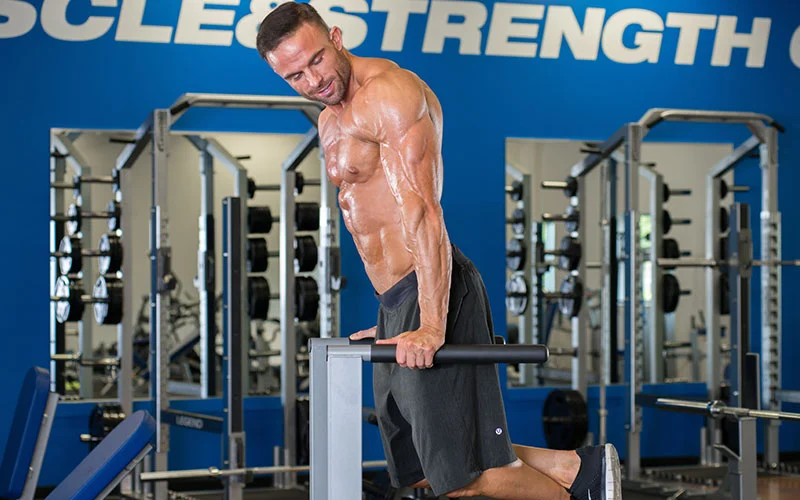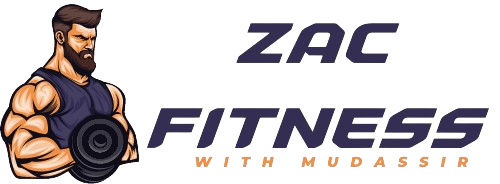Finding time to work out can be a challenge, but what if I told you that you can burn fat, build muscle, and improve your fitness in just 30 minutes a day? That’s right! A well-structured full body workout can deliver maximum results in minimal time, giving you all the benefits of a longer session in just half an hour. This guide will walk you through the ultimate 30-minute full body workout, explain its benefits, and show you how to get the most out of every minute.
Introduction
If you’ve got a busy schedule or just want to get the most out of your time in the gym, this workout is for you. Whether your goal is fat loss, muscle building, or both, a full body workout targets all the major muscle groups, providing a balanced approach to fitness. In just 30 minutes, you can engage your entire body, boost your metabolism, and improve strength without spending hours at the gym.
Benefits of a Full Body Workout
Burn Fat and Build Muscle Simultaneously
One of the biggest advantages of a full body workout is that it allows you to burn fat and build muscle at the same time. By targeting multiple muscle groups in one session, you keep your heart rate up, torch calories, and promote muscle growth. This efficient combination is key for those who want to tone up and lose weight.
Boost Metabolism and Endurance
A full body workout elevates your heart rate and keeps it up throughout the session, which helps increase your metabolic rate. The more muscles you activate, the more energy your body needs, meaning you’ll continue to burn calories even after your workout. Over time, this will also improve your stamina and endurance.
Save Time Without Compromising Results
Let’s face it—time is precious. A full body workout compresses what could be hours of exercise into a fast, effective routine that delivers results without the need to split your workouts by muscle groups. In just 30 minutes, you can work your entire body and see the benefits of consistent exercise.
What You Need for This Workout
Basic Equipment (Optional)
This full body workout can be done with just your body weight, but if you want to increase the intensity, you can incorporate basic equipment like dumbbells or resistance bands. These will help you progress and make the workout more challenging as you get stronger.
Space and Attire
Make sure you have enough space to move freely—about a yoga mat’s worth of room is usually sufficient. Wear comfortable, breathable clothes that allow you to move easily, and make sure you have supportive shoes, especially for the cardio portions of the workout.
The Structure of the 30-Minute Full Body Workout
The workout is divided into three parts: a warm-up, the core workout, and a cool-down. Each part is crucial for maximizing results and preventing injury.

Warm-Up (5 Minutes)
Start with five minutes of dynamic movements to get your blood flowing and prepare your body for the workout. These exercises are designed to loosen up your muscles and increase your heart rate gradually:
- Jumping Jacks
- Arm Circles
- Bodyweight Squats
Core Workout Routine (20 Minutes)
The main workout consists of strength and cardio exercises that target every major muscle group. After 45 seconds of each workout, take a 15-second break. Cycle through the routine two times for a total of 20 minutes.
Upper Body Exercises
- Push-Ups: Great for working the chest, shoulders, and triceps. Maintain a straight posture as you lower yourself until your chest nearly touches the floor, then raise yourself back up.
- Bent-Over Rows (with dumbbells or resistance band): Targets the upper back and improves posture. Bend at the hips, pull the weights or band toward your body, and squeeze your shoulder blades together.
Lower Body Exercises
- Bodyweight Squats: One of the best exercises for building leg strength. Make sure to keep your back straight and push through your heels as you return to standing.
- Lunges: A classic move that works the quads, hamstrings, and glutes. Take a single stride forward and bend your body until your front leg is parallel to the floor.
- Glute Bridges: Lie on your back, bend your knees, and lift your hips toward the ceiling. This activates the glutes and helps with core stability.
Core and Abdominal Exercises
- Planks: Hold a plank position on your forearms, engaging your core to keep your body straight. This move strengthens your entire core, including your back and shoulders.
- Russian Twists: Lean back a little while sitting on the floor with your knees bent, then twist side to side. This exercise improves your core and works your obliques.
Cardio Intervals
- Burpees: A full-body movement that boosts fat burn. Drop into a squat, kick your feet back into a plank, return to squat position, and jump up explosively.
- High Knees: While jogging, raise your knees as much as you can. This is a great cardio move that also engages your core.
Cool-Down (5 Minutes)
Finish with a cool-down to lower your heart rate and stretch your muscles. This can include static stretches for your legs, arms, and back, as well as some deep breathing exercises to help relax your body.
Detailed Exercise Breakdown
To ensure you’re getting the most from your workout, let’s take a closer look at each category of exercises.
Upper Body Exercises
- Push-Ups: Push-ups are fantastic for building upper body strength and muscle definition. They work your chest, triceps, and shoulders while also engaging your core for stability.
- Bent-Over Rows: Using either dumbbells or a resistance band, this exercise targets the back muscles, helping to improve posture and prevent back pain.
Lower Body Exercises
- Squats and Lunges: These foundational lower body moves not only strengthen your legs and glutes but also improve balance and coordination. Squats are particularly great for building strength in your quads and hamstrings, while lunges add a balance and flexibility challenge.
- Glute Bridges: Glute bridges activate the often-underused muscles in the hips and glutes, which are essential for lower body strength and power.
Core and Abdominal Exercises
- Planks: This static hold works wonders for your entire core, from your abs to your lower back. It also improves stability, making it an essential exercise for overall fitness.
- Russian Twists: Twisting motions engage your obliques and help to strengthen your sides, adding balance to your core training.
Cardio Intervals to Maximize Fat Burn
- Burpees: These are one of the most effective moves for full-body conditioning. They incorporate both strength and cardio elements, making them ideal for burning fat while building muscle.
- High Knees: This exercise is a fast-paced cardio move that also targets your core, ensuring you’re burning calories and engaging multiple muscle groups simultaneously.
Customizing the Workout to Your Fitness Level
Beginner Modifications
If you’re just starting out, there are plenty of ways to adjust this workout to suit your level. For example, you can perform push-ups on your knees, or swap out burpees for a lower-impact exercise like step jacks. The goal is to focus on form and gradually increase intensity as you progress.
Advanced Variations
For those who are more advanced, try adding dumbbells to your lunges and squats for an extra challenge. You can also increase the intensity by shortening rest periods or adding more rounds to the routine.
How to Stay Consistent with This Routine
Set Realistic Goals
Track your progress by setting small, attainable goals. Maybe it’s completing one more round of the workout, or lifting slightly heavier weights. Keeping a log of your workouts can help you stay motivated and see how far you’ve come.
Stay Motivated
One of the best ways to stay consistent is to find a workout buddy. Having someone to hold you accountable can be the difference between skipping a workout and showing up. Also, feel free to mix up your routine by trying new variations to keep things exciting.
Nutrition to Support Fat Loss and Muscle Gain
Pre-Workout Fuel
Your body needs the right fuel to power through a workout. Opt for a light snack like a banana, oatmeal, or a protein shake to give your body the energy it needs for maximum performance during the workout.
Post-Workout Recovery
After you’ve finished your full body workout, it’s important to refuel with protein to help your muscles recover and grow. Lean proteins like chicken, fish, or plant-based protein shakes are great options, and don’t forget to hydrate!
Common Mistakes to Avoid
Skipping the Warm-Up or Cool-Down
Skipping these important phases can lead to injury or poor performance. Make sure to properly prepare your body with a warm-up and allow it to recover with a cool-down.
Poor Form During High-Intensity Movements
Form is crucial, especially when performing fast-paced exercises like burpees. Focus on quality over quantity to avoid injury and maximize your results.
Not Pushing Yourself Hard Enough
A full body workout is meant to challenge you. If you’re not pushing yourself to your limits, you won’t see the full benefits. Keep a pace that’s intense but sustainable, and gradually increase difficulty as you get stronger.
Tracking Your Results and Progress
How to Measure Fat Loss and Muscle Gain
While the scale can be one way to track progress, it’s not always the most reliable. Consider taking measurements, photos, and tracking how your clothes fit. You can also measure strength gains by noting how much weight you lift or how many reps you complete.
Adjusting the Workout Over Time
As you get stronger, don’t be afraid to modify your routine. Add weights, try new variations, or shorten rest periods to keep challenging yourself and making progress.
Read more: Unlock Your Best Self with Delta Fitness Authority’s Proven Workout Strategies
Conclusion
A full body workout is an incredible way to burn fat, build muscle, and improve your overall fitness in just 30 minutes. By staying consistent and gradually increasing the intensity, you’ll see long-term results without needing to spend hours at the gym. Whether you’re a beginner or advanced, this workout can be tailored to your needs, helping you achieve your fitness goals efficiently.
FAQs
Can beginners do this workout?
Yes! With modifications, beginners can easily follow this routine by adjusting the intensity and focusing on form.
How often should I do this 30-minute workout?
Aim to do this workout 3-5 times a week, depending on your fitness level. Make sure to allow for rest days to aid recovery.
Do I need any equipment for this workout?
No equipment is necessary, but adding dumbbells or resistance bands can make the workout more challenging.
Will this workout help me lose belly fat?
While spot reduction isn’t possible, a full body workout will help you burn overall body fat, which includes belly fat.
What should I eat before and after the workout?
A light pre-workout snack like a banana or oats is ideal. After the workout, focus on protein-rich foods for muscle recovery, like chicken, fish, or a protein shake.
